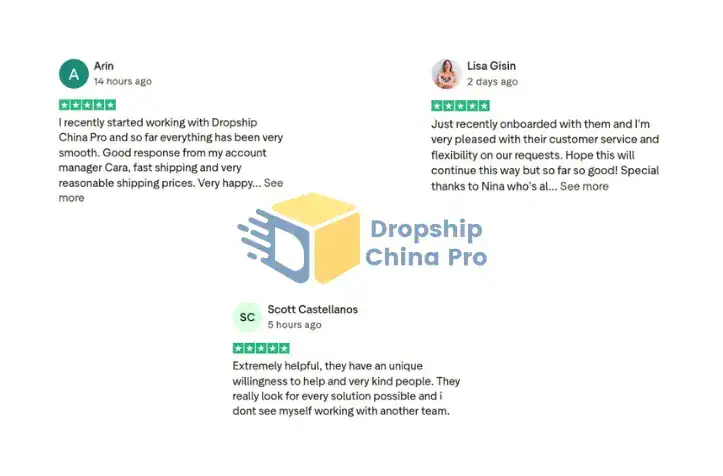The rapid growth of e-commerce has transformed how businesses manage their operations, with US fulfillment warehouses becoming essential for competitive success. As online retailers scale beyond self-fulfillment, professional fulfillment centers provide the infrastructure to meet customer expectations.
A US fulfillment warehouse handles inventory storage, order processing, and shipping, enabling businesses to offer faster delivery times and reduce operational overhead. This guide covers everything e-commerce sellers need to know about fulfillment warehouses, from when to outsource to selecting and implementing the right solution for sustainable growth.
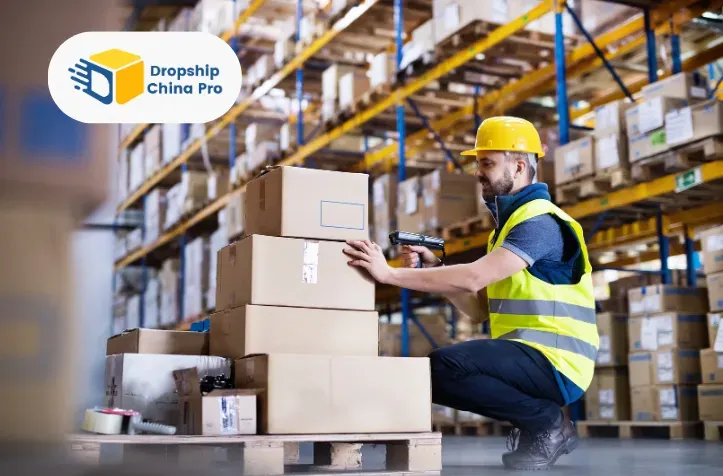
Key Takeaways for US Fulfillment Warehouse: The Complete Guide for E-commerce Sellers
- Role of US Fulfillment Warehouses: US fulfillment centers manage inventory storage, order processing, and shipping to help e-commerce businesses deliver faster and reduce operational workload.
- When to Outsource Fulfillment: Consider outsourcing if you process over 100 orders monthly, spend 10+ hours weekly on fulfillment, face storage limits, have high shipping costs for distant customers, or want to focus more on core business activities.
- Types of Fulfillment Providers: Large national 3PL networks offer coast-to-coast coverage and economies of scale, while boutique providers specialize in personalized service and flexibility for unique product needs.
- Hybrid Fulfillment Model: Combining overseas manufacturing with US warehouses allows cost savings while ensuring quick domestic delivery and better quality control.
- Geographic Importance: East Coast centers offer advantages for Northeast customers and Atlantic imports, West Coast hubs optimize delivery to Pacific markets and Asian imports, and central US locations balance costs and transit times.
- Fulfillment Cost Components: Fees include pick-and-pack ($2.50–$5.00 per order), storage ($0.50–$2.00 per cubic foot/month), shipping, and potential hidden charges like setup and seasonal surcharges—a detailed cost analysis is essential.
- Critical Features for Partner Selection: Prioritize fulfillment providers with seamless e-commerce platform integrations, real-time inventory sync, automated order processing, returns handling, and custom packaging capabilities.
- Customer Support and Service Quality: Dedicated account managers and rapid response times are crucial to handling issues efficiently, particularly during business growth and seasonal peaks.
- Technology and Inventory Management: Utilize warehouse management systems with barcode/RFID tracking, automated reorder alerts, multi-channel support, and automated returns processing to maximize efficiency and customer satisfaction.
- Implementation and Performance Tracking: Onboarding usually takes 2-6 weeks, including system setup and inventory transfer; continuous monitoring of accuracy, shipping speed, costs, and customer feedback ensures ongoing improvement and scalability.
What Is a US Fulfillment Warehouse and When You Need One
How US Fulfillment Centers Work for E-commerce
A US fulfillment warehouse operates as a third-party logistics (3PL) hub that receives, stores, and ships products for e-commerce businesses. When customers place orders, the fulfillment center automatically receives order details, picks products from inventory, packs them according to specifications, and ships them using negotiated carrier rates.
Modern facilities complete this process within 24-48 hours while providing real-time inventory tracking and integration with popular e-commerce platforms. The geographic advantage of US-based fulfillment enables most customers to receive orders within 1-3 business days using standard ground shipping.
Signs It’s Time to Outsource Your Fulfillment
Several indicators suggest when businesses should transition to a US fulfillment warehouse. Key signs include:
- Order volume: Consistently processing 100-200+ orders per month
- Time investment: Fulfillment tasks consuming more than 10-15 hours weekly
- Geographic expansion: High shipping costs and long delivery times for distant customers
- Storage limitations: Running out of space for growing inventory
- Seasonal fluctuations: Difficulty handling peak demand periods
- Focus shift needed: Wanting to concentrate on marketing and product development rather than operational tasks
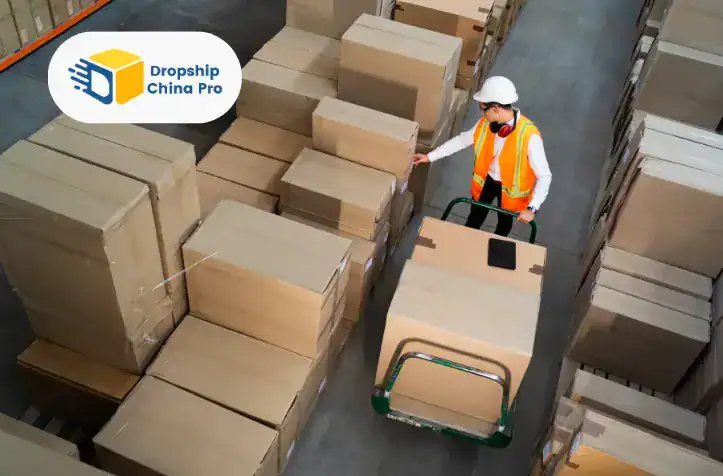
Types of US Fulfillment Services and Providers
Major National 3PL Networks vs Boutique Providers
The US fulfillment warehouse landscape includes two primary categories: large national networks and boutique providers, each offering distinct advantages.
National 3PL networks operate multiple facilities across the United States, enabling coast-to-coast coverage with 1-2 day delivery capabilities. These providers offer robust technology platforms and economies of scale, but typically require higher monthly minimums and may lack flexibility for unique requirements. Their standardized processes often struggle with specialized handling or custom packaging needs.
Boutique fulfillment centers operate smaller facilities but provide personalized service and flexibility that larger networks cannot match. These providers often accommodate lower volume requirements, offer flexible pricing structures, and provide dedicated account management with direct access to decision-makers. They excel at handling unique product requirements and custom specifications that don’t fit standardized models, making them particularly valuable for businesses with specialized needs or those requiring responsive customer service.
Hybrid Fulfillment: Combining China Direct with US Warehouses
Hybrid fulfillment models combine international sourcing with domestic fulfillment capabilities, allowing businesses to maintain cost-effective manufacturing while providing fast local delivery through US fulfillment warehouses. This approach has become increasingly popular as businesses seek to balance cost efficiency with customer expectations for fast delivery.
The hybrid model works by maintaining fast-moving inventory in US facilities while shipping slower-moving products directly from international suppliers. This strategy optimizes inventory investment while maintaining competitive delivery times for popular products, enabling businesses to test market demand before committing to US inventory.
Cost advantages extend beyond shipping savings, as businesses leverage lower manufacturing costs overseas while avoiding extended delivery times associated with direct international shipping. Products stored in US facilities benefit from domestic tracking, faster delivery times, easier returns processing, and improved customer satisfaction.
Quality control significantly improves through US facility inspection and processing before customer delivery. This additional touchpoint allows for better packaging standards, quality assurance, and the addition of promotional materials that might be challenging to manage from overseas facilities. Experienced providers in this space often maintain long-term relationships with clients, some spanning 7-8 years, demonstrating their ability to adapt and grow alongside businesses.
Regional Fulfillment Centers: East Coast vs West Coast
Geographic strategy plays a crucial role in US fulfillment warehouse selection, with East and West Coast locations offering distinct advantages based on target markets and supply chains.
East Coast fulfillment centers provide optimal coverage for the Northeast corridor and offer advantages for businesses importing through Atlantic ports, particularly those working with European suppliers. Major cities from Boston to Washington, DC, can receive next-day delivery from facilities in New Jersey, Pennsylvania, or Virginia.
West Coast fulfillment centers excel for businesses serving California and the Pacific Northwest while offering import advantages for Asian supply chains. Many successful fulfillment providers operate strategic locations near major ports like Los Angeles and Long Beach, enabling efficient container receipt and quick inventory processing for businesses with Asian suppliers.
Central US locations serve as compromise solutions, offering reasonable shipping times to both coasts while potentially reducing overall shipping costs. The most effective providers often maintain multiple strategic locations to optimize delivery times and costs. Some established providers operate facilities in both New Jersey and California, handling significant daily volume (often 30,000+ parcels per day) while maintaining reliable service quality that keeps clients satisfied for years.
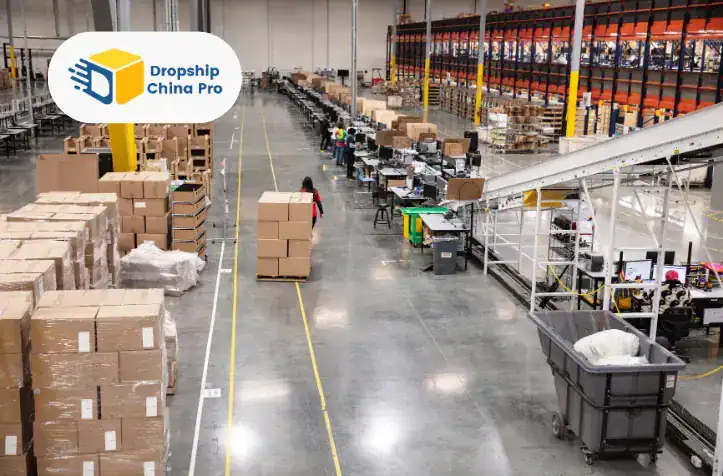
US Fulfillment Costs and Pricing Models
Pick, Pack, and Shipping Fee Breakdown
Pick and pack fees typically range from $2.50 to $5.00 per order, covering labor and systems required to locate and package products. Simple single-item orders cost less than complex multi-item orders requiring multiple warehouse locations.
Shipping costs depend on package weight, dimensions, destination, and service level. Most US fulfillment warehouses pass through carrier charges plus a small markup. Understanding dimensional weight pricing becomes crucial as carriers charge based on size and weight, whichever is greater.
Additional fees apply to oversized items, hazardous materials, or products requiring special handling. Return processing fees typically range from $2 to $8 per returned item, depending on inspection requirements and restocking procedures.
Storage Costs and Monthly Minimums
Storage costs typically range from $0.50 to $2.00 per cubic foot per month, with variations based on facility location and storage type. Climate-controlled storage commands premium pricing, while bulk storage areas offer lower rates.
Monthly minimums have become increasingly common, typically ranging from $200 to $500 per month, regardless of actual usage. Inventory receiving fees apply when shipments arrive, typically costing $20 to $50 per hour of labor.
Long-term storage fees encourage inventory turnover by charging additional fees for products stored beyond 6-12 months. Businesses can optimize storage costs through careful inventory management and seasonal planning.
Hidden Fees and Total Cost Analysis
Hidden fees can significantly impact total fulfillment costs. Common additional charges include:
- Setup fees: $0 to $500 for account establishment and system integration
- Integration fees: Costs for connecting e-commerce platforms to fulfillment systems
- Account management fees: Monthly charges for dedicated support services
- Packaging material fees: Additional costs for custom boxes or branded materials
- Fuel surcharges: Variable costs that fluctuate based on shipping patterns
- Seasonal surcharges: Peak period charges during holidays when capacity is limited
- Dimensional weight penalties: Extra fees when package size exceeds weight-based pricing
Total cost analysis requires examining all fee components across projected order volumes and inventory levels to determine the true cost per order and optimal pricing strategies.
How to Choose the Right US Fulfillment Partner
Essential Features for E-commerce Integration
Seamless e-commerce platform integration represents the foundation of successful fulfillment partnerships. Key integration capabilities include:
- Real-time inventory sync: Automatic updates preventing overselling across channels
- Automated order processing: Seamless flow from order placement to fulfillment
- Tracking information updates: Automatic customer notifications with shipping details
- Multi-channel support: Unified inventory management across different sales platforms
- Return management: Automated processing of returns and refunds
- Custom packaging options: Ability to accommodate branded materials and gift messages
- API flexibility: Integration capabilities for custom solutions and unique business needs
Shopify integration should include native apps that handle complex scenarios like backorders and split shipments while maintaining customer communication through automated notifications.
Evaluating Service Quality and Customer Support
Customer support quality often determines fulfillment partnership success, making it crucial to evaluate responsiveness, expertise, and availability before making commitments. The best providers prioritize customer relationships over pure cost efficiency, understanding that reliable service creates long-term value.
Account management structure varies significantly among providers. Larger networks often use impersonal ticket-based systems, while quality-focused providers offer dedicated account managers with direct phone access for urgent matters. This personal touch becomes invaluable when issues arise or when businesses need rapid responses during critical periods.
Response time expectations should be established, with emergencies requiring immediate attention. The most reliable providers maintain customer service availability most of the time, understanding that e-commerce operates around the clock and issues can’t wait for business hours.
Technical support capabilities become crucial when integration issues arise, requiring knowledgeable staff who understand both fulfillment operations and e-commerce platforms. Quality control procedures directly impact customer satisfaction through consistent inspection processes and packaging standards that maintain brand reputation.
Scalability and Growth Planning
Scalability planning ensures fulfillment partnerships support business growth without requiring disruptive transitions. The most reliable providers demonstrate consistent capacity flexibility during growth periods and seasonal fluctuations, handling volume increases without sacrificing service quality.
Geographic expansion support enables businesses to reach new markets efficiently through multiple strategic locations. Rather than being limited to single locations, experienced providers often maintain comprehensive networks that can accommodate business growth across different regions.
Service enhancement options allow adding capabilities like custom packaging, branding solutions, or specialized handling as businesses evolve. The best providers focus on building long-term relationships, adapting their services as client needs change rather than applying one-size-fits-all approaches.
Technology advancement capabilities ensure fulfillment systems evolve with business needs, while transparent cost structures prevent pricing surprises as operations expand. Understanding that reliability and customer service matter more than having the absolute lowest costs helps businesses find providers who prioritize sustainable partnerships over short-term savings.
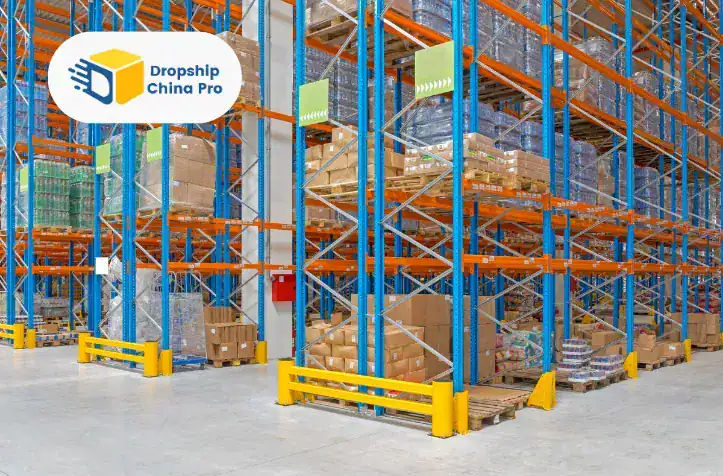
Technology Integration and Multi-Channel Setup
Shopify and E-commerce Platform Connections
Shopify integration represents a critical technical aspect of modern fulfillment operations. Leading US fulfillment warehouses offer sophisticated apps that automate order processing while maintaining inventory accuracy across all sales channels.
Native Shopify applications provide seamless integration by automatically syncing order details, inventory levels, and tracking information. Advanced integrations handle complex scenarios like split shipments and backorders while maintaining customer communication through automated notifications.
WooCommerce and BigCommerce integrations require similar capabilities but may involve different technical approaches. Multi-store management becomes crucial for businesses operating multiple stores or brands, requiring systems that maintain separate inventory pools with consolidated reporting.
Inventory Management Systems and Real-Time Tracking
Real-time inventory tracking prevents stockouts and maintains customer satisfaction through accurate product availability information. Warehouse Management Systems (WMS) provide comprehensive visibility into inventory locations, quantities, and movement patterns.
Barcode scanning and RFID technology enable accurate tracking while minimizing human error. Automated reorder points and low-stock alerts help maintain optimal inventory levels, while lot tracking becomes essential for businesses with perishable products or batch requirements.
Inventory reporting should include analytics on turnover rates, aging inventory, and cost analysis to help optimize inventory investment and identify slow-moving products requiring attention.
Returns Processing and Customer Service Automation
Returns processing automation streamlines reverse logistics while maintaining customer satisfaction through efficient refund and exchange procedures. Automated return authorization systems enable customers to initiate returns through self-service portals while providing processing instructions to fulfillment centers.
Inspection and restocking procedures determine how returned products re-enter inventory or get directed to liquidation channels. Customer communication automation keeps buyers informed throughout the returns process, reducing support workload while maintaining transparency.
Integration with customer service platforms enables support teams to access real-time order status and shipping information, improving support quality while reducing resolution times for customer inquiries.
| Aspect | Key Points | Benefits |
|---|---|---|
| Fulfillment Types | National 3PL Networks, Boutique Providers, Hybrid Models | Wide coverage, personalized service, cost efficiency |
| Geographic Locations | East Coast, West Coast, Central US | Faster delivery, import advantages, cost savings |
| Cost Components | Pick & Pack Fees, Storage, Shipping, Hidden Fees | Transparent pricing, budget planning |
| Technology Integration | Real-time Inventory, Platform Sync, Returns Automation | Accuracy, efficiency, customer satisfaction |
| When to Outsource | Order Volume, Time Constraints, Storage Limits | Scale operations, focus on growth |
Implementation: Getting Started with US Fulfillment
Onboarding Process and Timeline
Fulfillment center onboarding typically requires 2-6 weeks, depending on complexity, inventory volume, and integration requirements. Understanding the timeline helps businesses plan transitions without disrupting operations.
Initial setup begins with account configuration and system integration testing, including establishing user accounts, configuring settings, and testing order flow between e-commerce platforms and fulfillment systems.
Inventory planning and transfer represent the most complex onboarding aspect. This process includes cataloging existing inventory, creating SKU mapping, and coordinating physical transfer to fulfillment facilities. Go-live planning coordinates the transition while ensuring inventory availability throughout the changeover period.
Inventory Management and Quality Control
Inventory management procedures establish the foundation for successful operations through accurate stock levels and efficient order processing. Professional providers implement systematic approaches that minimize errors while maximizing efficiency, often handling tens of thousands of orders daily while maintaining precision.
Receiving procedures verify inventory accuracy and condition upon arrival, including quantity verification and comprehensive quality inspection. The most reliable providers maintain detailed receiving reports and offer transparency into any discrepancies requiring attention.
Storage optimization ensures products are positioned for efficient picking while maintaining proper environmental conditions. Established providers often operate multiple large facilities (1,600+ square meters each) with sophisticated warehouse management systems that optimize storage based on product velocity and handling requirements.
Special handling procedures accommodate products with unique requirements, like fragile items or temperature-sensitive products. Quality control measures prevent defective products from reaching customers, with experienced providers offering both quality inspection services and branding solutions to enhance the customer unboxing experience. The combination of efficient operations with customer-focused service creates the reliability that enables providers to maintain client relationships for many years.
Performance Tracking and Optimization
Performance monitoring enables continuous improvement through systematic tracking of key metrics. Essential performance indicators include:
- Order accuracy rates: Should exceed 99.5% for competitive service
- Shipping performance: Delivery times, carrier reliability, and cost efficiency
- Cost per order analysis: Total fulfillment expenses, including all fees
- Customer satisfaction: Feedback collection, return rates, and service inquiries
- Inventory turnover: Stock level optimization and slow-moving product identification
- Response times: Customer service and technical support availability
Continuous improvement processes use performance data to implement operational enhancements through regular review meetings with fulfillment providers, ensuring alignment on goals and collaborative problem-solving for ongoing optimization.
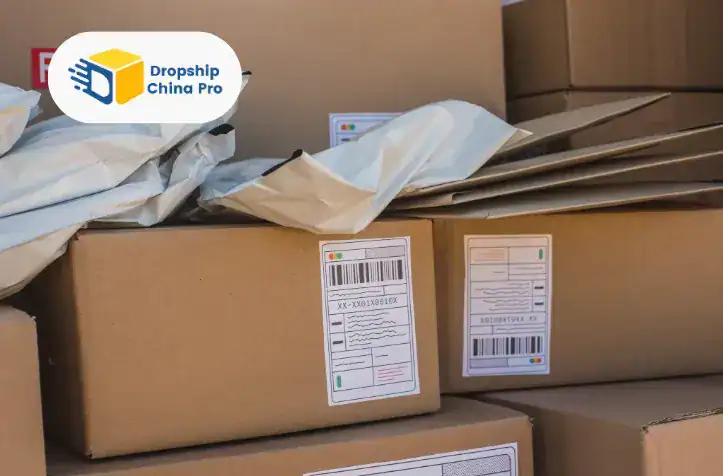
FAQs for US Fulfillment Warehouse: The Complete Guide for E-commerce Sellers
What is a US fulfillment center?
A US fulfillment center is a facility specializing in e-commerce fulfillment that stores inventory and manages order processing, including picking, packing, and shipping. It supports inventory storage, returns processing, and customer support, often as part of a national 3PL network. These centers help sellers minimize fulfillment costs with efficient pick and pack fees and storage fees.
What is fulfillment in a warehouse?
Fulfillment in a warehouse means the entire process of receiving products, managing inventory, picking and packing orders, and shipping them to customers. It also covers returns processing and multi-channel integration to support sales across platforms, ensuring smooth order fulfillment and delivery services.
What is the difference between a fulfillment center and a warehouse?
A fulfillment center focuses on fast, accurate order processing and shipping directly to customers. It combines inventory management with active order fulfillment and customer service. A warehouse mainly stores products long-term with less emphasis on order processing or shipping, often serving as bulk storage in supply chains.
What is an example of a fulfillment center?
A typical example of a US fulfillment warehouse is a facility that uses a geographic fulfillment strategy with boutique fulfillment centers on the East Coast and West Coast. These centers operate as part of hybrid fulfillment solutions, balancing inventory storage and quick shipping services to optimize delivery speed and reduce costs.
What is US fulfillment and how does it work?
US fulfillment is the process of storing, picking, packing, and shipping your products from a warehouse located in the United States. A US fulfillment warehouse (often run by 3PL fulfillment centers) handles order processing, inventory storage, and shipping services for e-commerce sellers. When an order comes in, the warehouse team picks the item, packs it, and ships it directly to your customer — often with faster delivery and lower domestic shipping costs than sending products from overseas.
Why do you need a US-based fulfillment warehouse?
Using a US fulfillment warehouse helps you reduce long shipping times, lower international delivery costs, and avoid customs delays. It also improves customer support, returns processing, and overall buyer satisfaction. Many e-commerce sellers use national 3PL networks or boutique fulfillment centers to get closer to customers on both the East Coast and West Coast, improving delivery speed and reducing fulfillment costs such as pick and pack fees or storage fees.
How do you choose a fulfillment center in the USA?
When selecting a US fulfillment warehouse, look at these factors:
- Location: East Coast or West Coast warehouses for a geographic fulfillment strategy.
- Services: Check if they offer multi-channel integration, inventory management tools, and hybrid fulfillment options.
- Costs: Compare fulfillment costs, including pick and pack fees, storage fees, and shipping rates.
- Scalability: Make sure the fulfillment provider can handle seasonal spikes and business growth.
- Support: Reliable returns processing and responsive customer support are essential.
Choose between national 3PL networks (broad coverage) or boutique fulfillment centers (personalized service), depending on your business needs.
Is a fulfillment center a warehouse?
Yes, but it’s a specialized type of warehouse. While a traditional warehouse is primarily for long-term storage of goods, a fulfillment center is a hub for e-commerce fulfillment. It’s an active facility focused on the rapid movement of products. Think of it as a warehouse with value-added services like order processing, inventory management, and preparing items for shipping. A US fulfillment warehouse is a key part of the supply chain that helps get products from the seller to the customer efficiently.
What is another name for a fulfillment center?
A fulfillment center is often referred to as a 3PL fulfillment center, a fulfillment house, or simply a fulfillment warehouse. The term “3PL” stands for Third-Party Logistics, which highlights that these centers are typically run by an external company that provides services for multiple clients. These fulfillment providers offer services like inventory storage, pick and pack fees, and shipping services to help e-commerce sellers handle their operations without the need for their physical warehouse.
What is the difference between logistics and fulfillment?
Logistics is a broad term that covers the entire process of moving and managing resources, from the point of origin to consumption. It’s the big picture of your supply chain. E-commerce fulfillment is a specific part of logistics. It is the process that begins when a customer places an order and ends when the product is delivered. So, fulfillment is the execution of logistics for a specific customer order, including order processing, returns processing, and coordinating with carriers, all to ensure excellent customer support and a seamless delivery experience.
What is the minimum order volume needed to use a US fulfillment warehouse?
Most US fulfillment warehouses accommodate businesses starting at 100-200 orders per month, though requirements vary by provider. Many quality providers focus on building long-term relationships rather than imposing strict minimums, understanding that today’s small business can become tomorrow’s major client. Look for providers that offer flexible pricing structures and are willing to grow alongside your business rather than those with rigid volume requirements.
How long does it take to switch to a new fulfillment provider?
The typical fulfillment center onboarding process takes 2-6 weeks, depending on inventory complexity and integration requirements. This timeline includes account setup, system integration testing, inventory transfer, and staff training. Experienced providers often streamline this process through dedicated account management and proven onboarding procedures. Planning the transition carefully ensures no disruption to customer orders during the changeover period.
What’s the difference between hybrid fulfillment and traditional fulfillment models?
Hybrid fulfillment combines international sourcing with domestic US warehousing, allowing businesses to maintain cost-effective manufacturing while providing fast local delivery. Traditional models typically use either direct shipping from overseas or exclusively US-based inventory. Hybrid approaches optimize costs by keeping fast-moving products in US facilities for quick delivery while shipping slower-moving items directly from international suppliers, offering the best of both worlds for cost and speed.
What Our Clients Say About Our Service
Lisa G.
As Lisa explains about her recent onboarding experience: “Just recently onboarded with them and I’m very pleased with their customer service and flexibility on our requests. Hope this will continue this way but so far so good! Special thanks to Nina who’s always responsive and helpful.”
Arin
As Arin shares regarding her fulfillment partnership: “I recently started working with Dropship China Pro and so far everything has been very smooth. Good response from my account manager Cara, fast shipping and very reasonable shipping prices. Very happy with the service so far.”
Scott C.
As Scott describes his experience with the team: “Extremely helpful, they have a unique willingness to help and very kind people. They really look for every solution possible and I don’t see myself working with another team.”
These testimonials reflect the core principles that distinguish exceptional US fulfillment warehouses from standard providers: dedicated account management, responsive customer service, and a genuine commitment to solving client challenges. When businesses find fulfillment partners who prioritize relationships over transactions, offer personalized support through named account managers, and maintain competitive pricing with reliable service, they establish foundations for sustainable growth.
The combination of operational excellence with human-centered service creates the trust and reliability that enables long-term partnerships, proving that the right fulfillment provider becomes an extension of your own business rather than just another vendor.
Ready to Transform Your E-commerce Fulfillment Strategy?
Now that you understand the key factors in selecting a US fulfillment warehouse, it’s time to take action. The difference between struggling with fulfillment challenges and achieving seamless operations often comes down to choosing a partner who truly understands your business needs.
Whether you’re looking to implement a hybrid fulfillment model that combines cost-effective product sourcing with fast US delivery, need comprehensive quality control to protect your brand reputation, or want POD fulfillment capabilities that scale with your growth, the right partnership can transform your entire operation.
Don’t let fulfillment limitations hold back your business growth. Our team provides the personalized support, flexible solutions, and reliable service that successful e-commerce businesses depend on. With dedicated account managers, strategic warehouse locations, and proven expertise in both international sourcing and domestic fulfillment, we help businesses achieve the operational efficiency and customer satisfaction they need to thrive.
Take the next step toward fulfillment success. Connect with our team to discuss your specific needs and discover how the right fulfillment strategy can accelerate your growth while reducing operational headaches.
Conclusion
Choosing the right US fulfillment warehouse represents a pivotal decision that can significantly impact business growth, customer satisfaction, and operational efficiency. As e-commerce continues to evolve, businesses that strategically leverage fulfillment partnerships position themselves for sustainable success in an increasingly competitive marketplace.
The key to successful fulfillment outsourcing lies in understanding your specific business needs, evaluating providers based on service quality rather than price alone, and selecting partners who prioritize long-term relationships over short-term gains. Whether pursuing a traditional fulfillment model or exploring innovative hybrid fulfillment approaches that combine international sourcing with domestic delivery, the foundation remains the same: reliable service, transparent communication, and scalable solutions.
Remember that the best fulfillment center partnerships extend beyond simple warehousing and shipping. They encompass comprehensive support, quality control, technology integration, and the flexibility to adapt as your business grows. By focusing on providers who demonstrate consistent performance, maintain strong customer relationships, and offer the personal attention that e-commerce businesses require, you’ll establish a fulfillment foundation that supports long-term success and customer satisfaction.

Hi, I’m Yavuz. I help e-commerce businesses grow through strategic content and SEO. Here, I share insights on fulfillment solutions, 3PL partnerships, and digital marketing strategies based on real data and industry trends.

